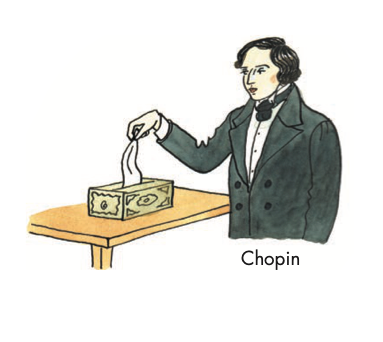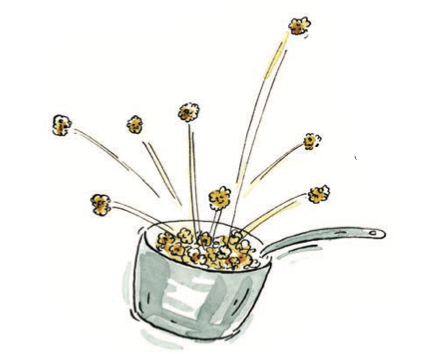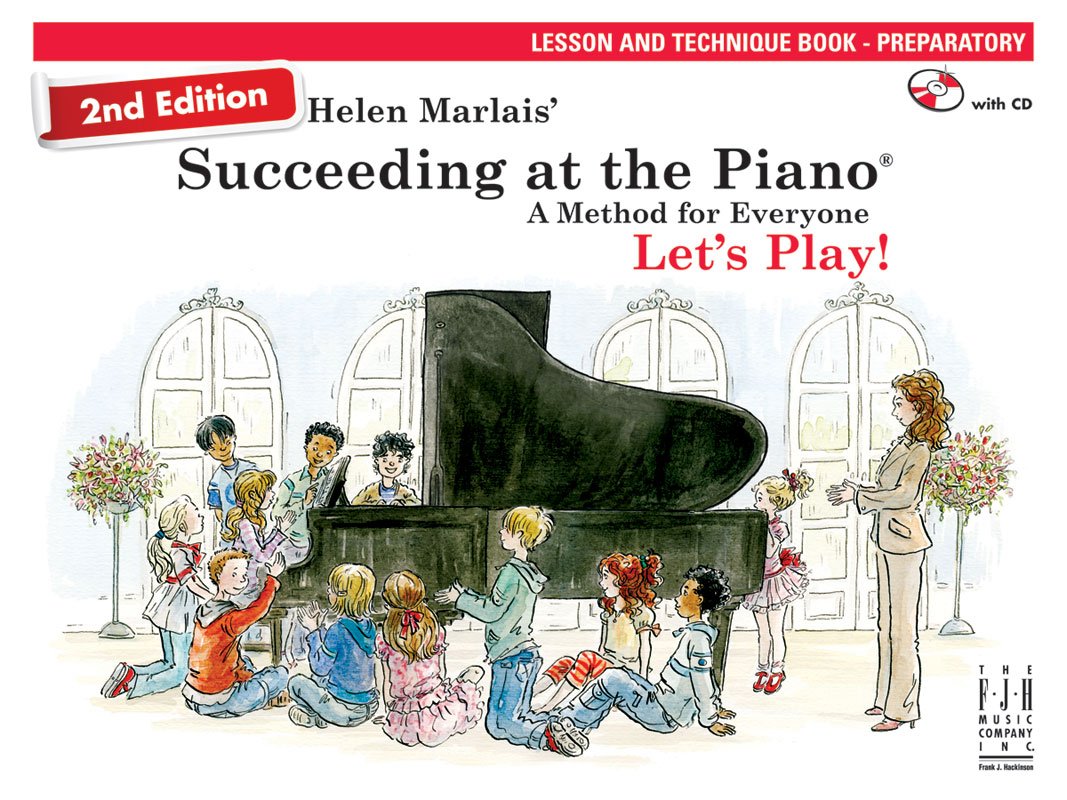Rhythm, technique, theory, ear training, playing by ear, music history, composition, interval-based reading, and wonderful music by multiple composers are seamlessly integrated for a well-balanced music curriculum.
Whether it’s imagining you are pulling tissues out of a box to develop a gentle, relaxed touch of the keys…

…picturing dolphins flipping and jumping to recall the keys…

...or tapping and counting the popping, hopping pop-corn to learn rhythm …

…Dr Helen Marlais turns foundational skills into joyful discovery.
The Marlais method helps make piano learning feel natural, fun, and rewarding. Each step builds on what students already know, with clear guidance, plenty of practice, and a positive, encouraging tone. Lessons are designed to spark excitement, build confidence, and let students explore music they truly enjoy.
With a strong focus on musical expression and fun from day one, this curriculum helps students fall in love with piano — and succeed every step of the way.
Interview of Dr Marlais
I’ve been teaching for a long time—like many musicians, I started back in high school and college, partly to earn some money. When it came time to pursue my doctoral degree, I knew I wanted to focus on both performance and pedagogy. That led me to Northwestern University in Evanston, Illinois, which had a fantastic combined program at the time.
One of my key mentors there was Alvina Pierce, who had worked closely with Frances Clark, the creator of the Music Tree series. Clark was a pioneer in intervallic reading—teaching students to read music by understanding intervals rather than memorizing individual notes. I actually learned from Music Tree as a beginner myself, and when I studied with Alvina, I saw how powerful that approach could be.
That said, I found that the early Music Tree books could be a little dry—there was a lot of intervallic reading right from the start. I felt that students also needed something to anchor them visually—guide notes—to go alongside the intervals. Still, I learned so much from Alvina, especially about teaching young children, and I eventually became her assistant when she traveled to conferences.
After completing my doctorate, I continued that work wherever I went—launching beginner programs and training pedagogy students in how to teach reading and other essential skills. What’s exciting is that even teachers and students who hadn’t learned this way before really loved the intervallic approach. They found it eye-opening and effective.
Intervallic reading is all about helping students recognize patterns on the staff—not just individual notes. Instead of memorizing every single note or relying on mnemonics that don’t really work, we teach students to see how notes relate to each other: steps, skips, fourths, fifths, and so on. Once they can see those patterns, they can feel them under their fingers and hear them too—and that’s how real reading happens.
I’ve always felt that teaching by intervals, especially when combined with guide notes, is the most effective way to build strong, confident readers. It’s just how the brain works—we don’t learn to read language by memorizing every word, we learn patterns and sounds. It’s the same with music. And once students can recognize those intervallic shapes, they start reading faster, playing more musically, and really enjoying the process.
One moment that really stands out happened during a recital with one of my young students—Joshua, a third grader who had just learned about major, minor, diminished, and augmented chords. I had asked him, “Do you think you could create a short piece—just one minute long—that uses all those chords?”
He showed up in a tuxedo and bow tie, beaming with excitement. When it was his turn, he sat down and started to play his piece… and then just kept going! He began improvising with all the new chords he’d learned, completely absorbed in the moment. It went on for several minutes, and while part of me was thinking, “When will this end?”, I was also amazed and moved. He clearly loved what he was doing.
That moment was a real lightbulb for me. I realized theory doesn’t have to live just on a page or in a workbook—it should be felt, explored, and discovered through play. Since then, I’ve made sure my books invite students to improvise with new concepts like seventh chords and experiment freely. Sometimes they’ll even joke and call them “demolished chords” instead of diminished—which always makes us laugh! But they’re learning deeply, because they’re engaged.
I’ve written quite a few books beyond Succeeding at the Piano, all of them designed to reinforce intervallic reading in fun, meaningful ways. One of my favorites is the Christmas series—students are always surprised there’s theory inside, but I love that even during the holidays they’re still practicing intervals.
Then there’s Energize Your Fingers Every Day, which focuses on technique and can double as a sight-reading series. It’s so colorful and playful that it’s usually the first book students pull out in a lesson! I’ve also written a 14-book series on sight reading and rhythm, which has been a game-changer for transfer students. I remember one who scored 45% on a reading test before using the series—and came back the next year with a 99%!
For younger learners, I’ve created books like Little Pieces for Little Fingers and Little Folks, filled with simple pieces, cute illustrations, and pages that introduce guide notes and intervals in an age-appropriate way.
I even collaborated with composers on an intervallic reading series, where every piece is built around clear patterns. And yes, I still believe in a little note spelling now and then—so we made a note speller series that’s actually fun and reinforces intervals, not just isolated notes. Everything ties back to helping students really see, hear, and understand the music.
Just my gosh, if your app would have been out all these years that I have been teaching, this would be the perfect combination. So I’m really excited about you developing this really amazing teaching tool that everybody needs.
And honestly, if a student has learned 29 notes using your app, they can totally skip the preparatory level of Succeeding at the Piano. They’d be ready to jump straight into Level 1A. At the start of each book, we list which guide notes and intervals are covered, so it’s really easy to flip through and say, “Yep—my student already knows all this!” Book 1A is such a natural next step.
You can always visit my website—helenmarlais.com. That’s where you’ll find everything: all of my books, videos, teaching guides, and even a curriculum chart that shows exactly how the different books fit together. It’s a great place to explore if you’re wondering where to start.
My books are published through The FJH Music Company, and you can also find them through Alfred Music, which carries the full line. And of course, most of my method books and collections—like Succeeding at the Piano, Sight Reading and Rhythm Every Day, Festival Collection, and more—are available on Amazon and other major booksellers, both new and used.

